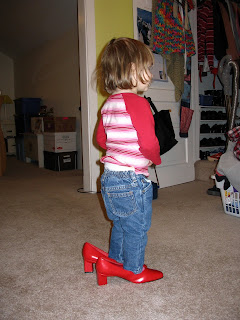 Like every other coach and blogger in the universe, I planned to blog about how to let go of 2008 and embrace 2009. And it would have been great. Trust me on that. I've been reading a lot of really important science about what makes us happier.
Like every other coach and blogger in the universe, I planned to blog about how to let go of 2008 and embrace 2009. And it would have been great. Trust me on that. I've been reading a lot of really important science about what makes us happier.But then my daughter wanted to play hide and seek. We did. The opportunity for a nap came up. I took it. At 4:00, I was mixing up a quick batch of chocolate chip cookies and sipping some red wine (they go together brilliantly). In the midst of mixing, the true secret to being happy came to me: stay in the flow.
Remember being a kid at play? If you liked what you were doing, you could spend hours engaged in an activity you were playing. You'd lose track of time. You might even forget to eat or use the bathroom. That's what positive psychologist Mihaly Csikszentmihalyi calls FLOW. (Sorry, I could not resist the science.)
As a parent, I get to witness flow every day. See the photo above? That's the result of my daughter getting in the flow—playing beauty shop with her dad. Watching my children get in the flow reminds me to do the same.
So go ahead and write those New Year's resolutions. Then try this, too:
1. Make a list of all of the times in your life you've experienced flow.
What were you doing? Were there any supporting circumstances? (For example, a writer might remember experiencing flow when on a writer's retreat but not at her home office.)
2. Review the list. Ask yourself, "What experiences do I want to have more of in the New Year?"
3. Schedule your flow experiences. (Yeah, I know—it seems weird to schedule flow. But if you don't put it on the calendar, it might not happen.)
4. Create an environment that supports your flow experience.
I get in the flow when I bead. But, for the past few years, I've kept all of my beads in a closet in my office. If I wanted to bead, I'd have to drag them all out, set them up, and then put them away before work the next day. This year I decided to set up a beading table in our library, where I could leave out both my beads and my projects. I'm more likely to have a flow experience because my environment supports me.
5. Repeat daily!
Have a Joyful New Year!
Rochelle, the Right Now! Coach























